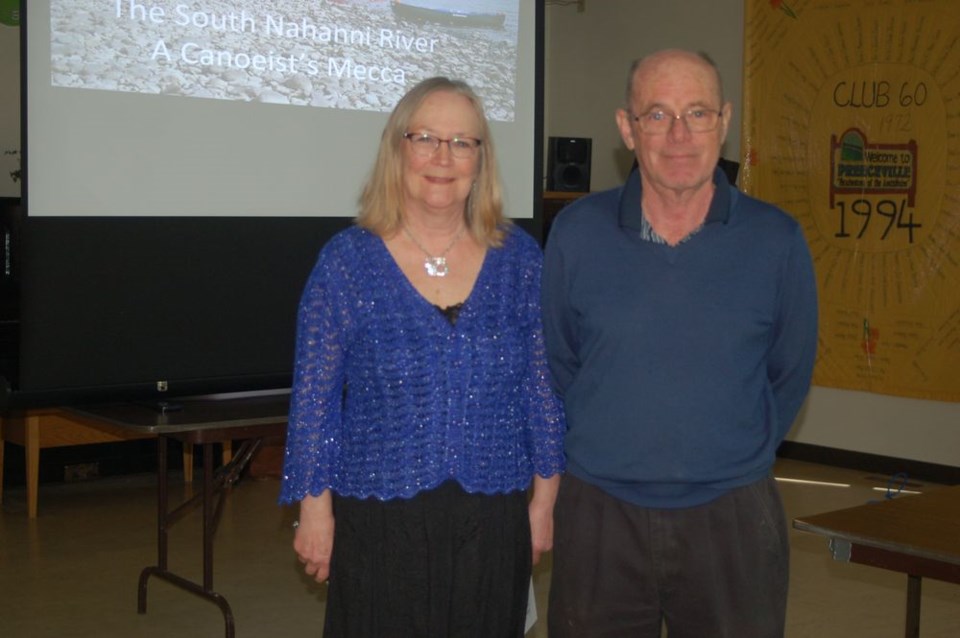Kathleen and Michael Pitt of Preeceville gave a presentation at Club 60 in Preeceville regarding their 1990 canoe trip down the South Nahanni River in the Northwest Territories on March 24.
The event was sponsored by the Kelsey Ecological Society.
After flying into the headwaters at the Moose Ponds, their adventure with two other couples lasted 21 days to take them 567 kilometres back to their vehicles on the Liard River. Highlights of the trip included 50 km of virtually continuous whitewater (Class II-IV) in the famous Rock Gardens, and standing below Virginia Falls, which is twice the height of Niagara Falls.
"Along the way we saw many caribou and moose, and enjoyed meals of freshly-caught Arctic grayling,” said Kathleen.
At Rabbitkettle Hot Springs, they stood on the largest tufa mounds in Canada, which measure 27 metres high and 70 metres in diameter at the base. Calcium and magnesium carbonate emanate from 21-degree C springs. These minerals precipitate, forming small dams of rimstone, which periodically divert the flow in a generally circular rotation around the mound. One revolution takes approximately 100 years.
In 1978, Nahanni National Park was formally dedicated by the United Nations Educational, Scientific, and Cultural Organization as a world heritage site, the first natural area so named. A plaque at Virginia Falls reads: "Nahanni National Park...contains outstanding examples of the major stages of the Earth's evolutionary history and of significant ongoing geological process.”
The last day on the river for the couple was spent at Kraus Hot Springs, which provided an intermittent home site for Gus and Mary Kraus between 1940 and 1971. The site had many chokecherries, and a black bear circled impatiently while they soaked in the warm water, much appreciated on this 20th night of their journey.
At the end of their presentation, Kathleen and Michael said that the adventure completely changed the direction their lives. As soon as they returned home, they got out their books and began planning their next trip, when they would once again be paddling down a seemingly endless northern Canadian river. In many ways, this initiated a string of events that brought Kathleen and Michael to eventually move to, and settle, in Preeceville.



